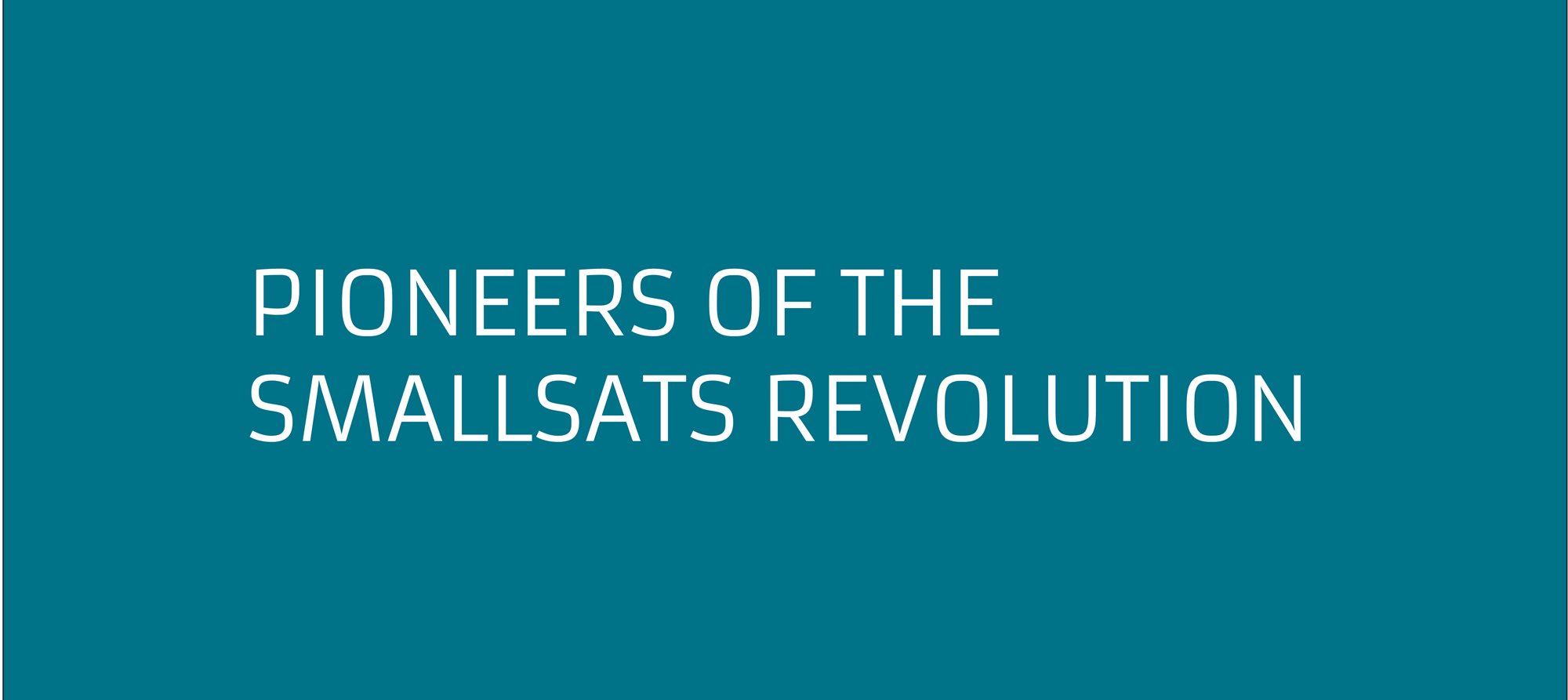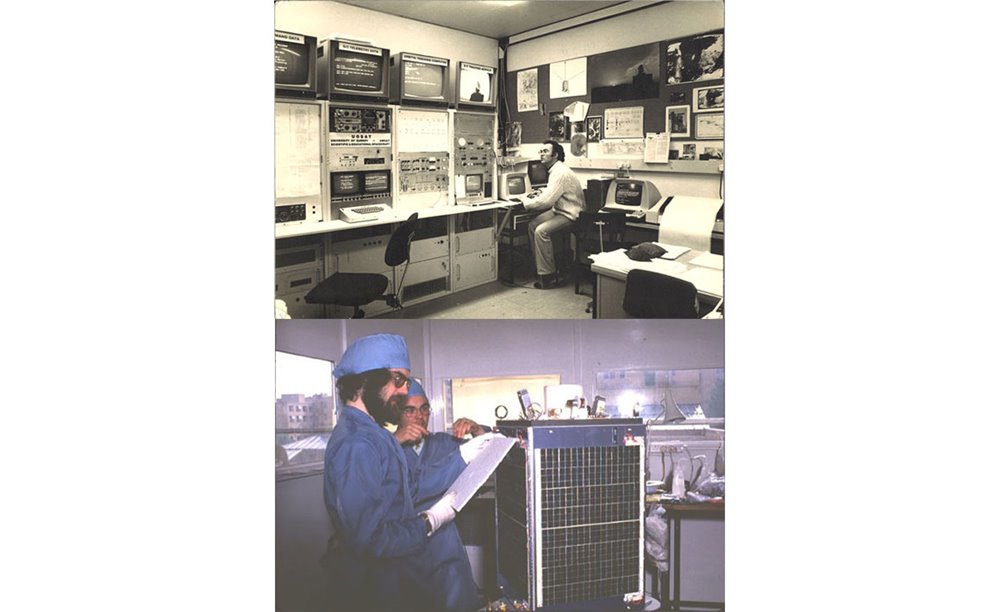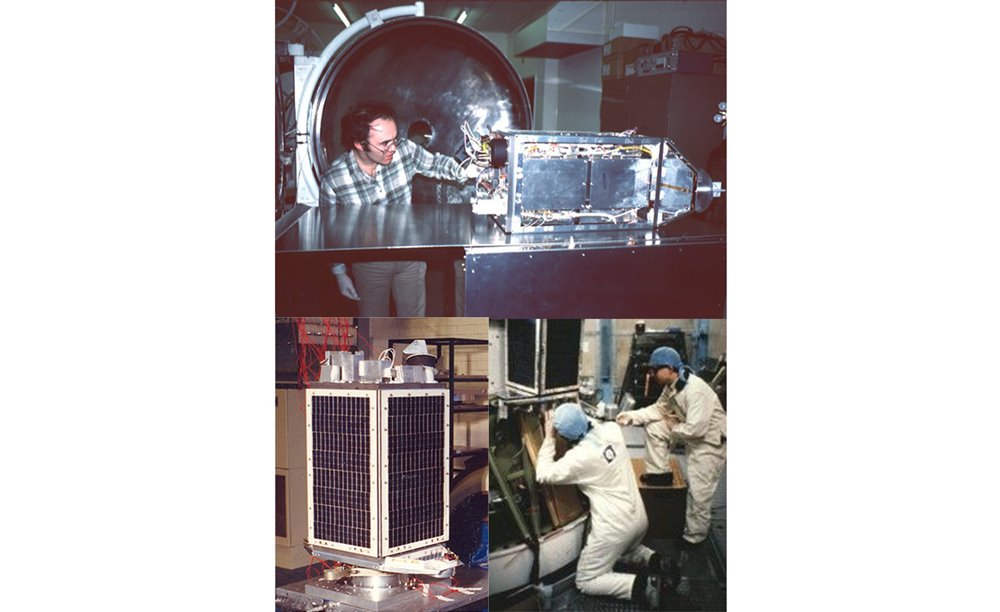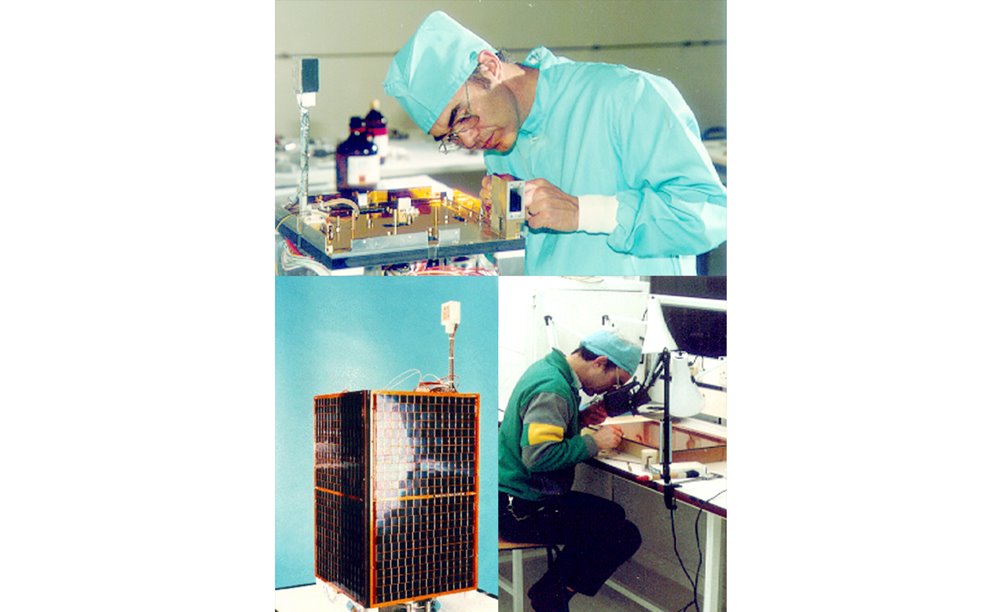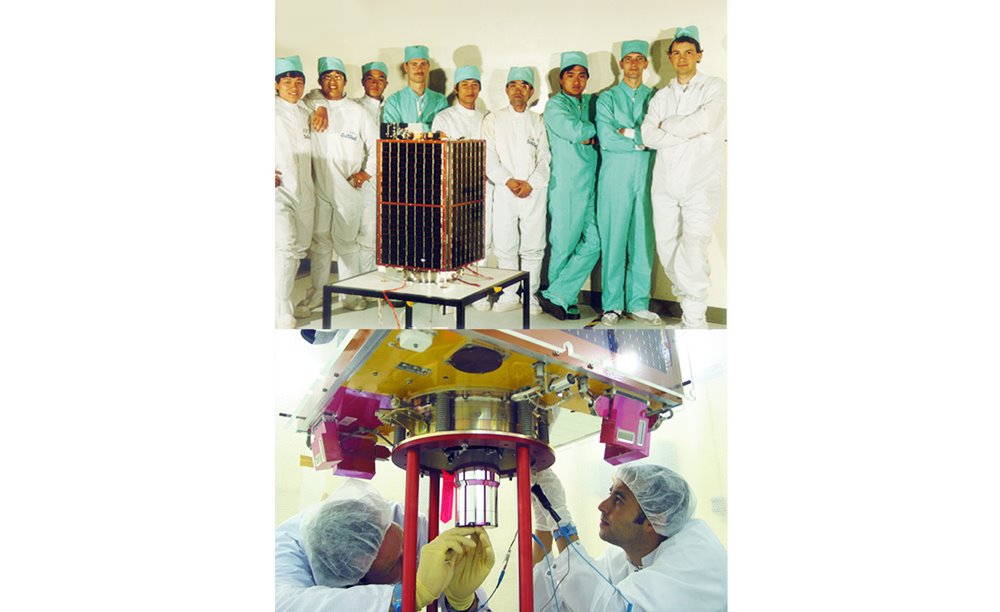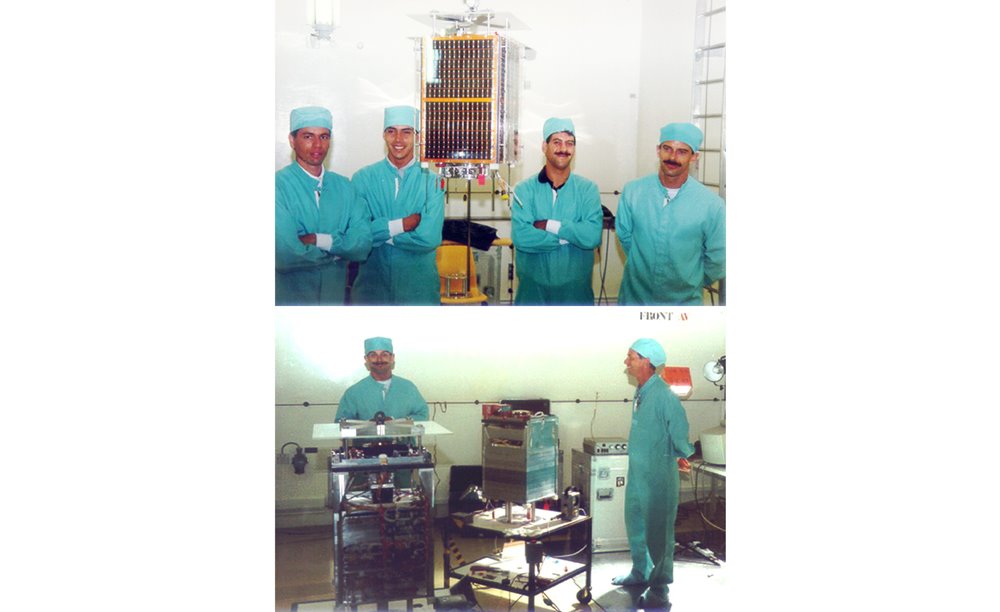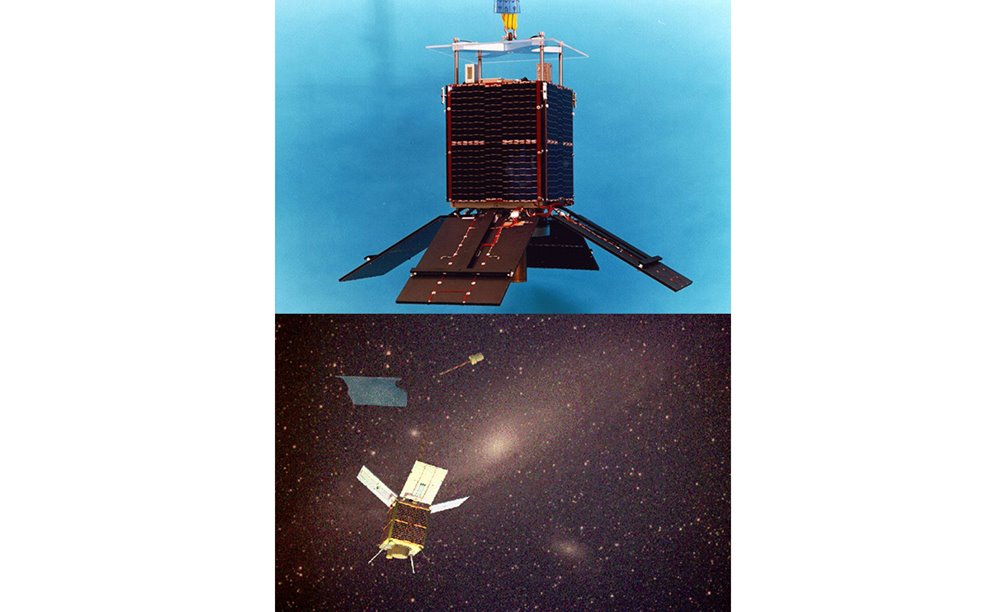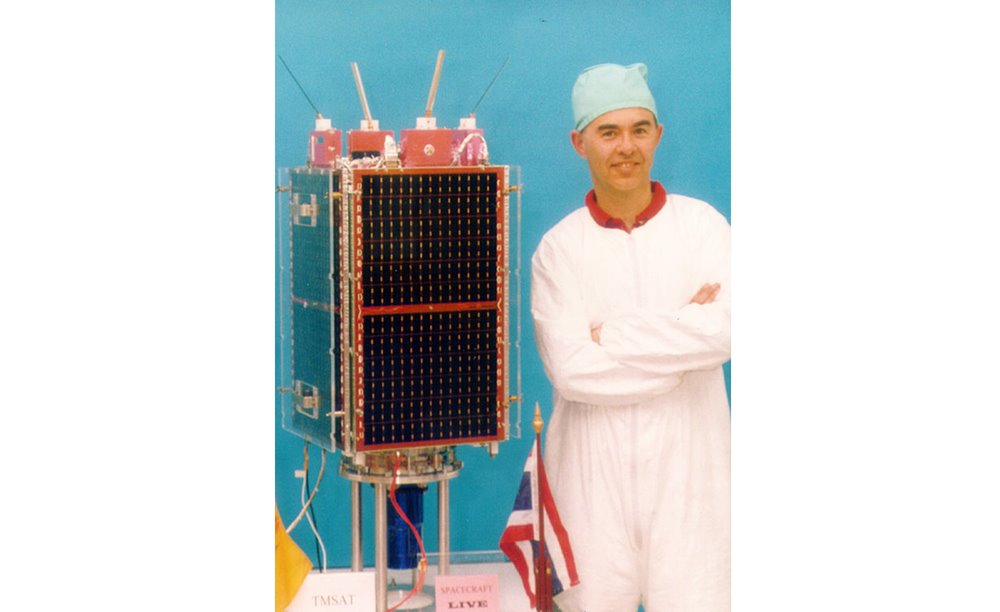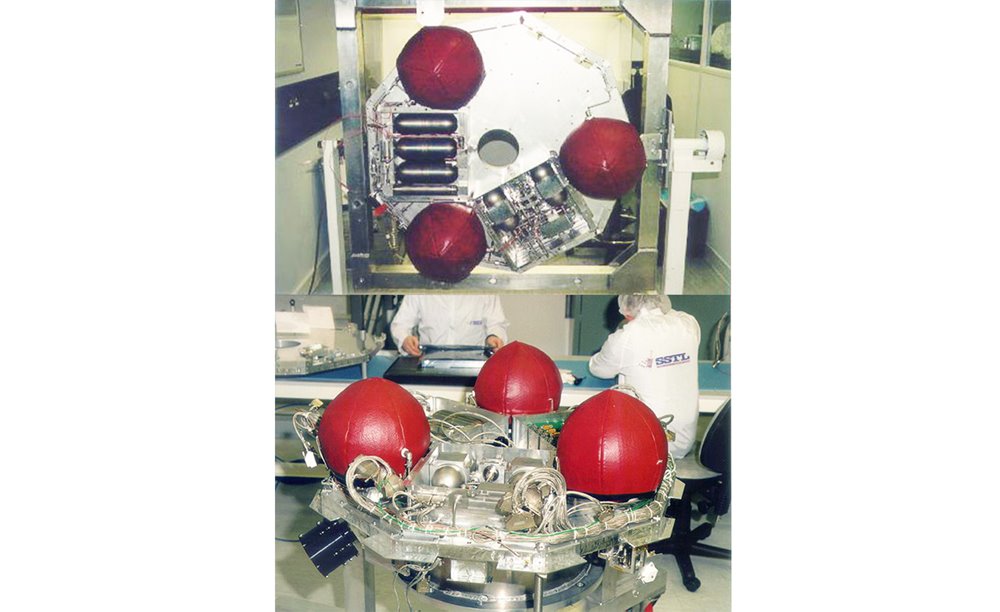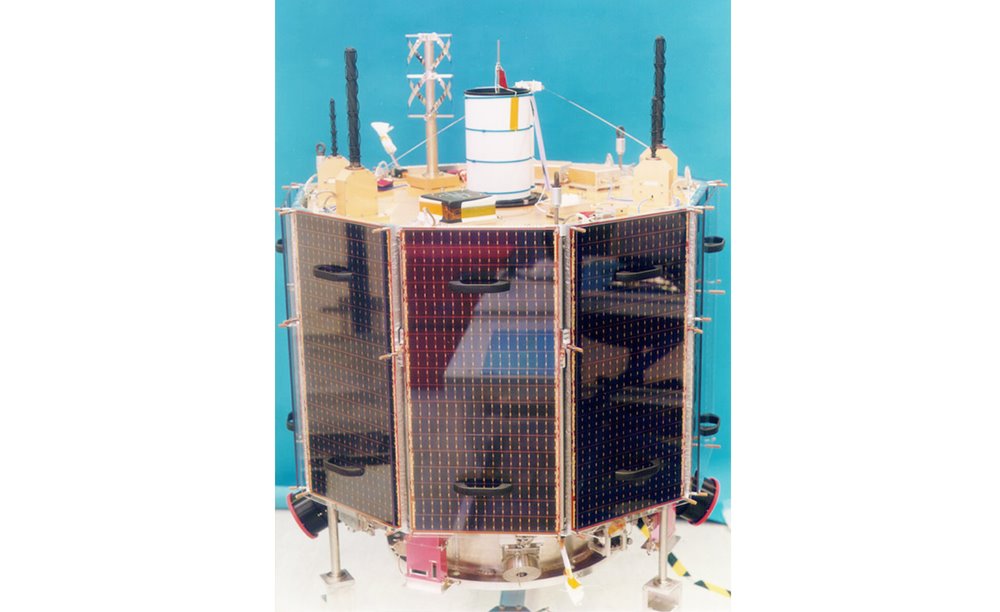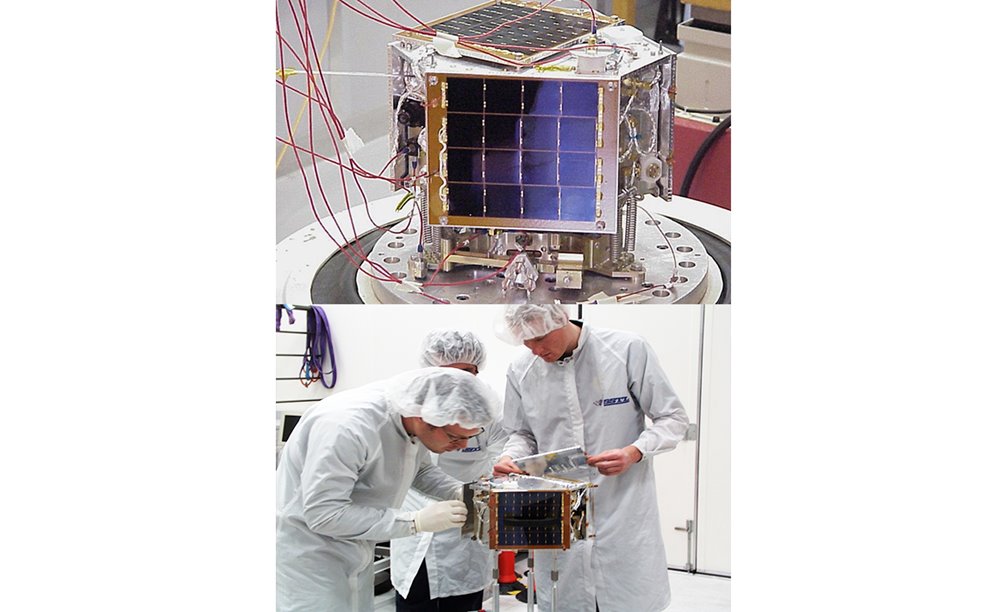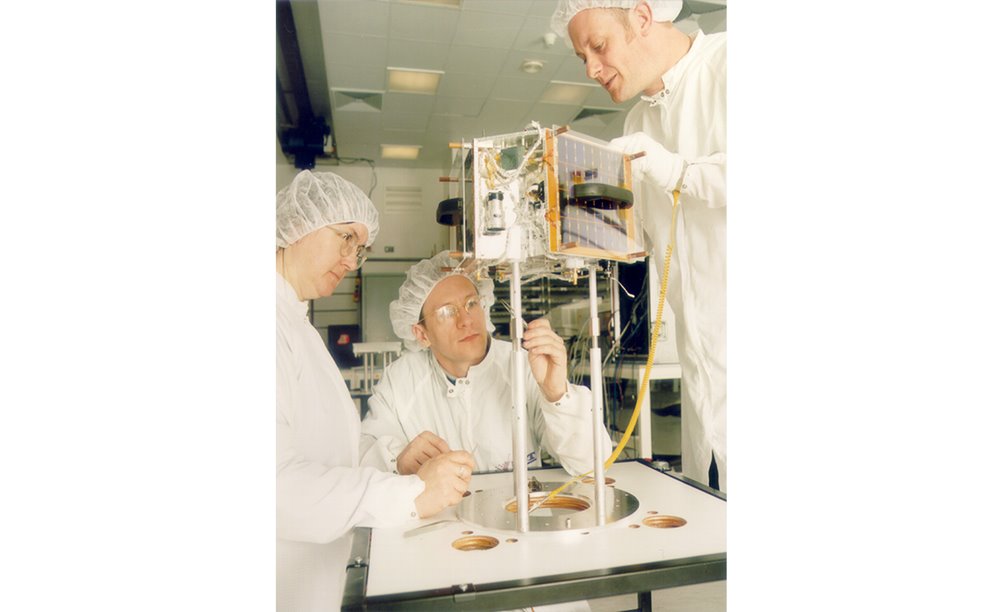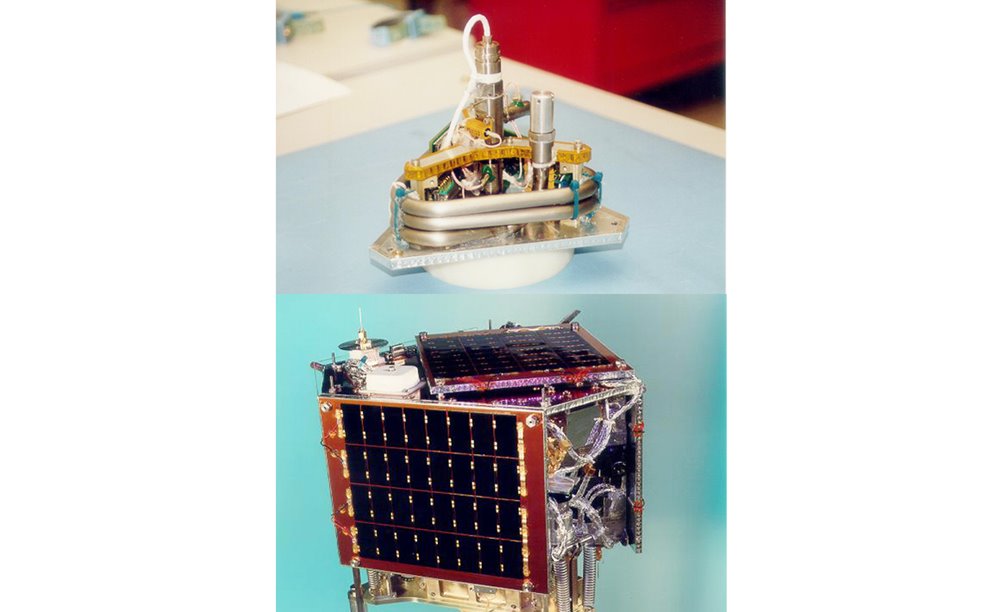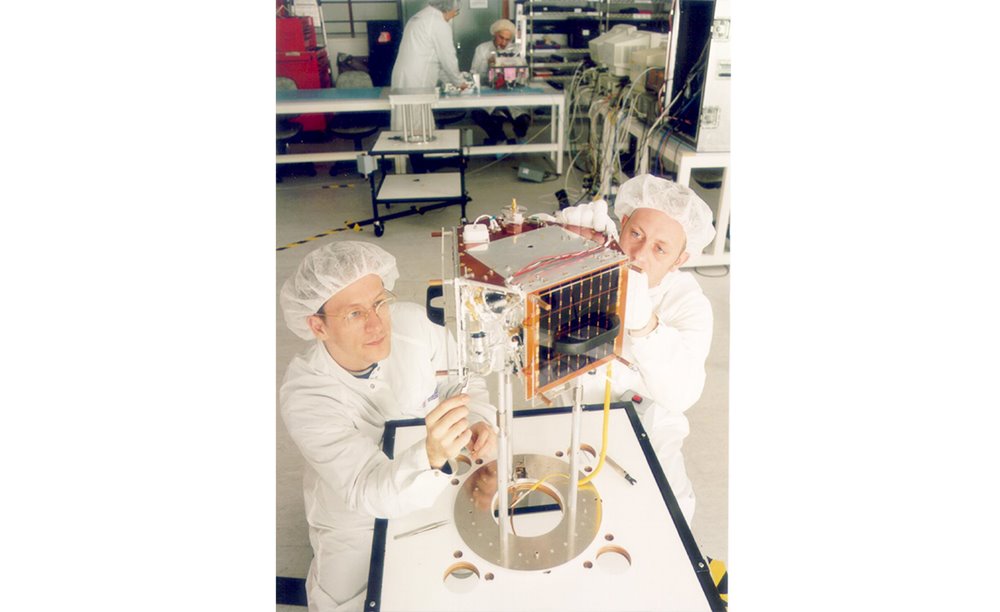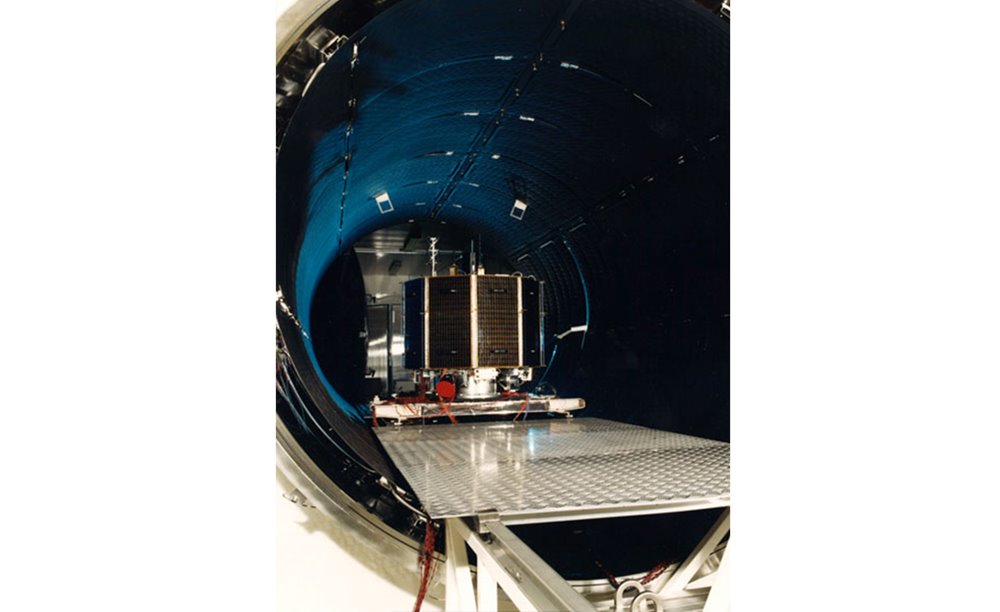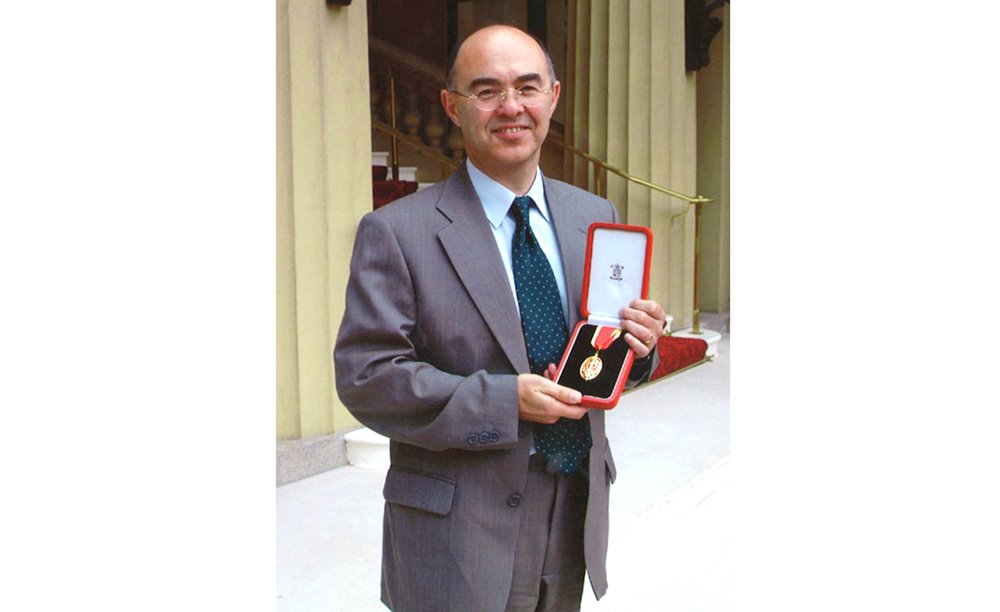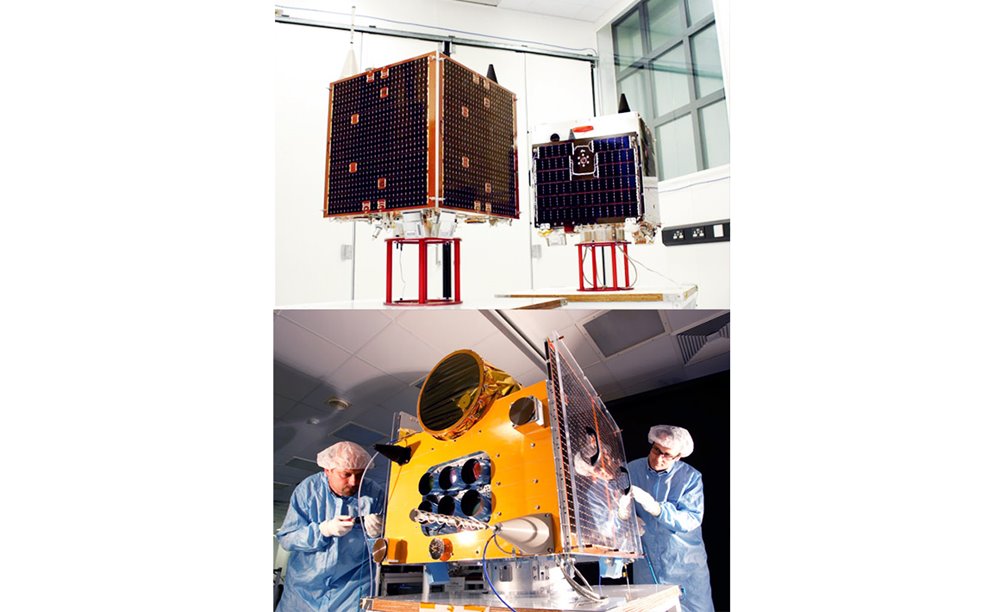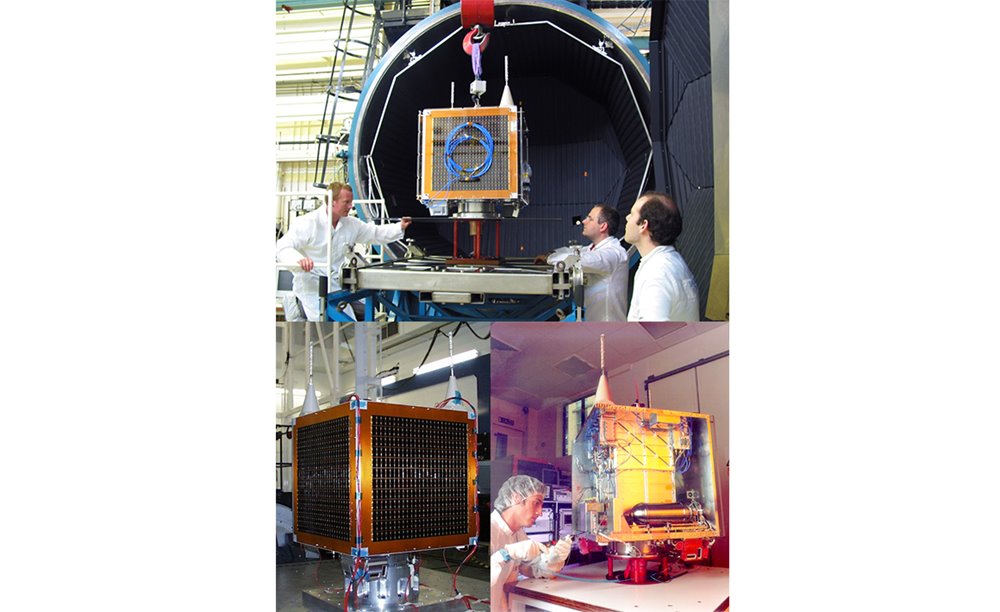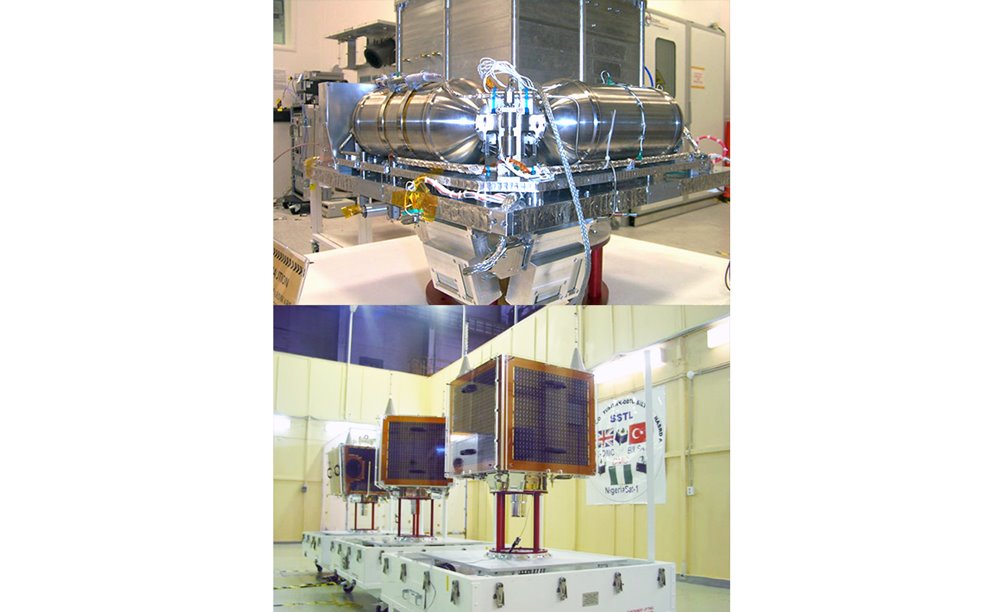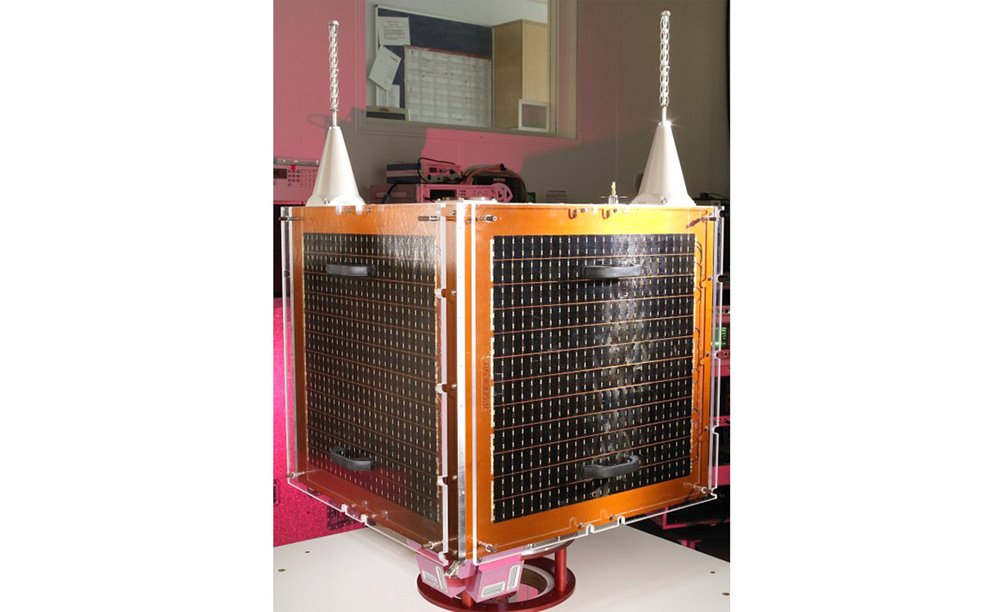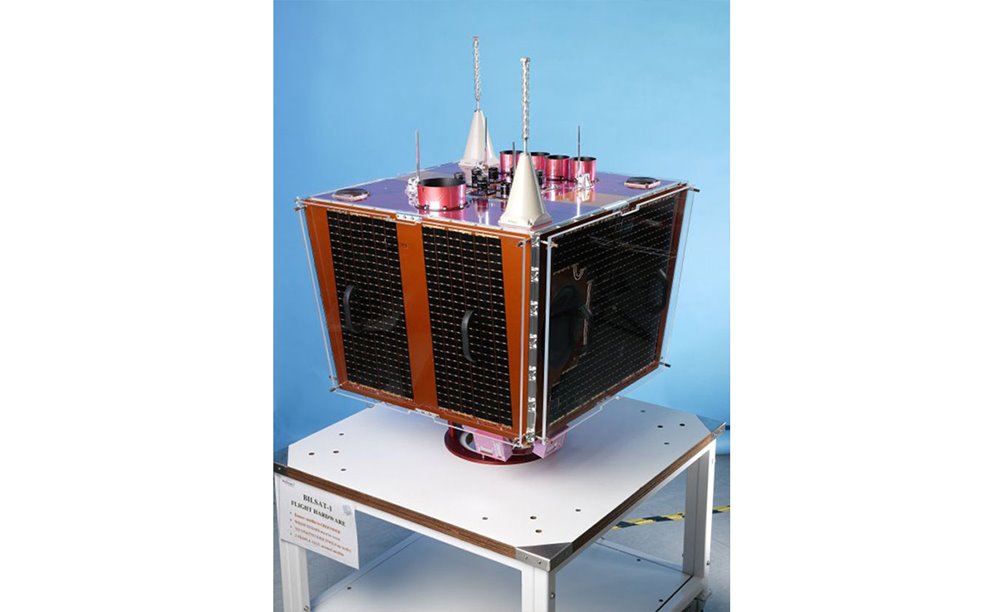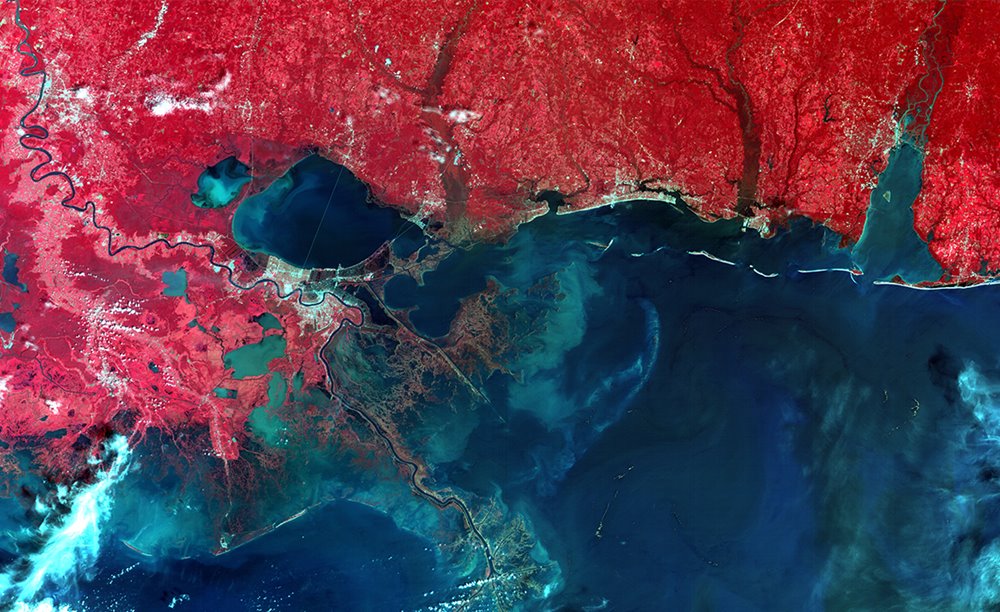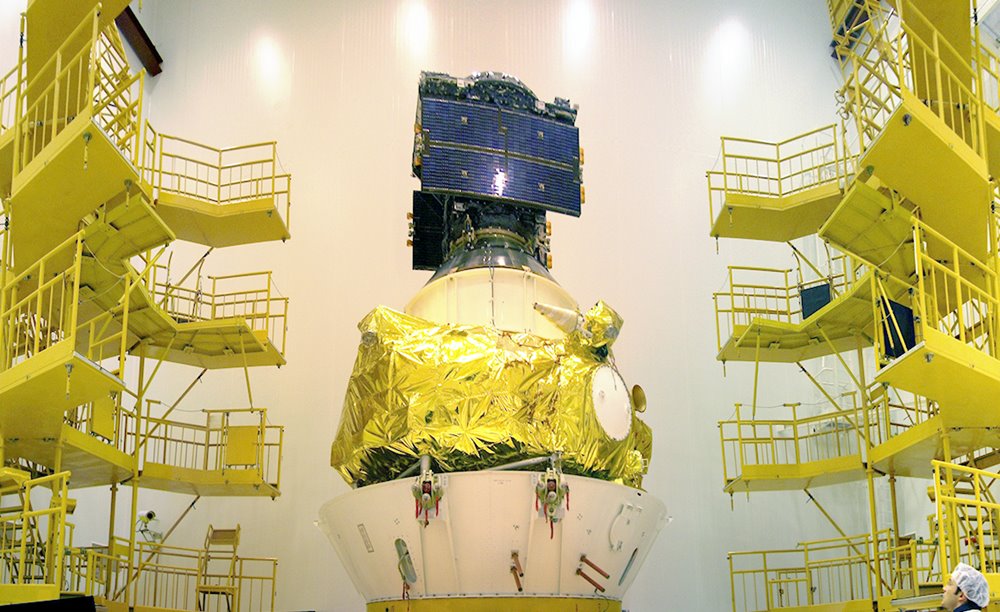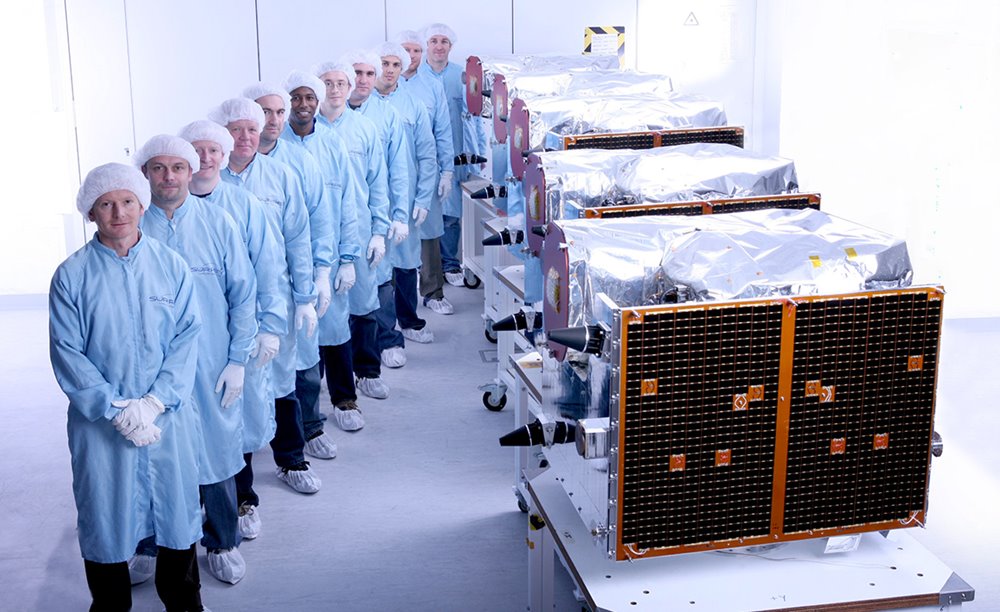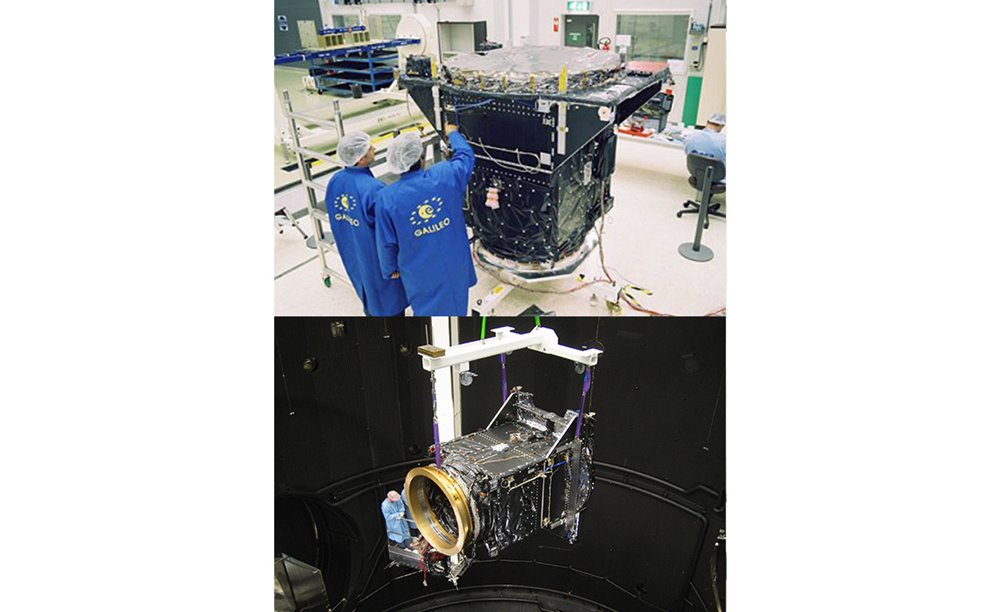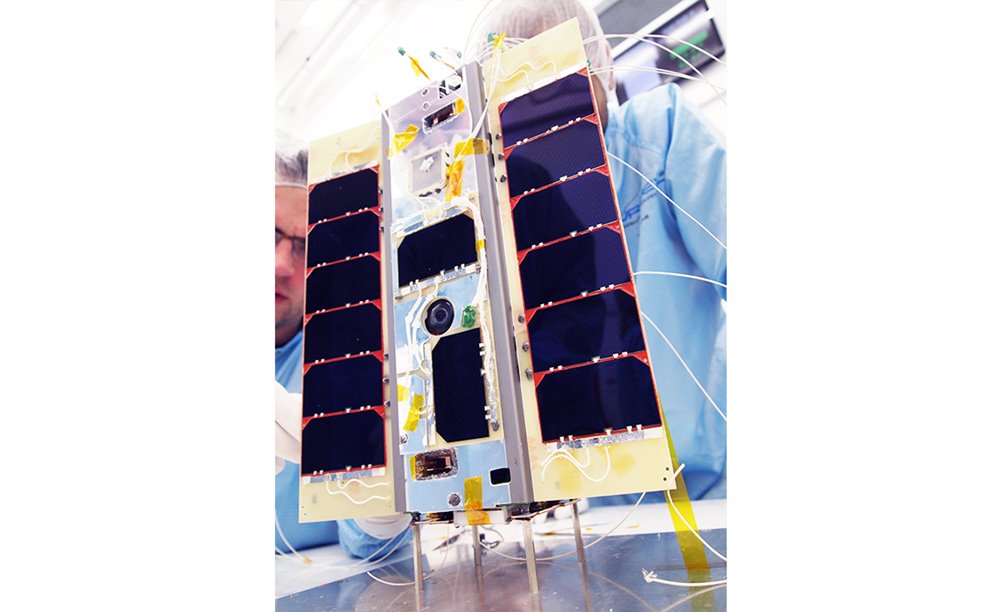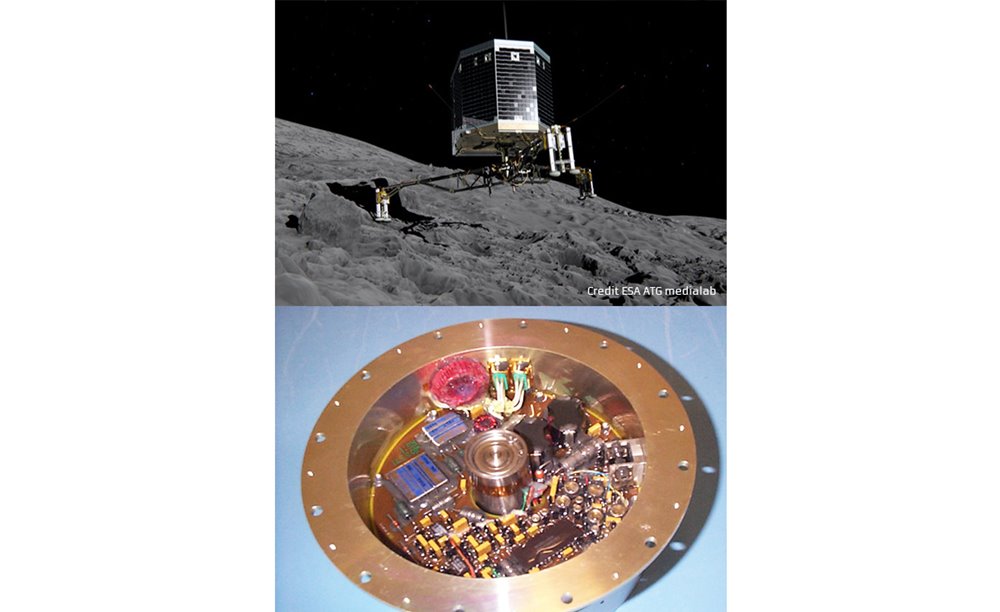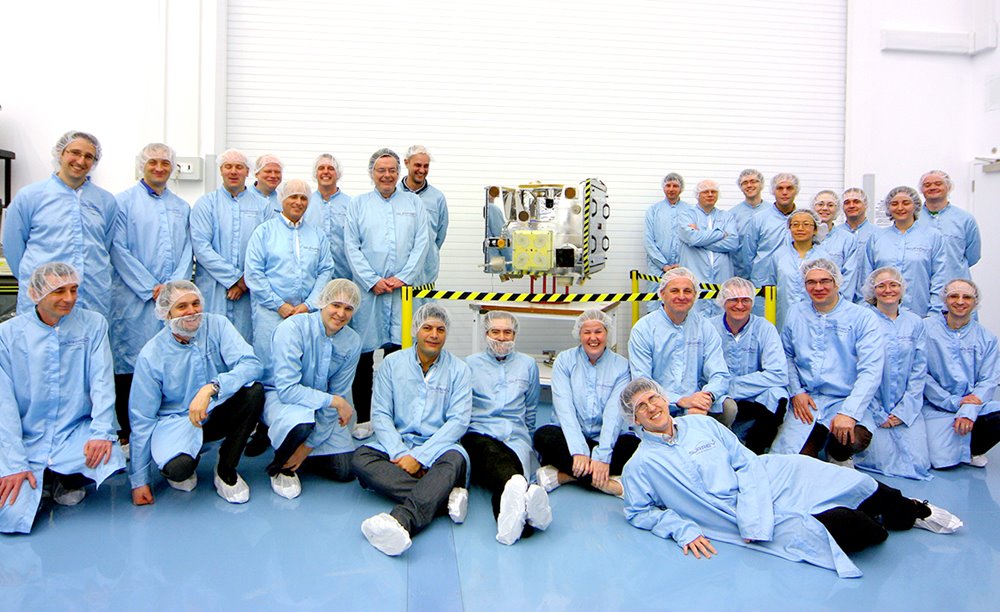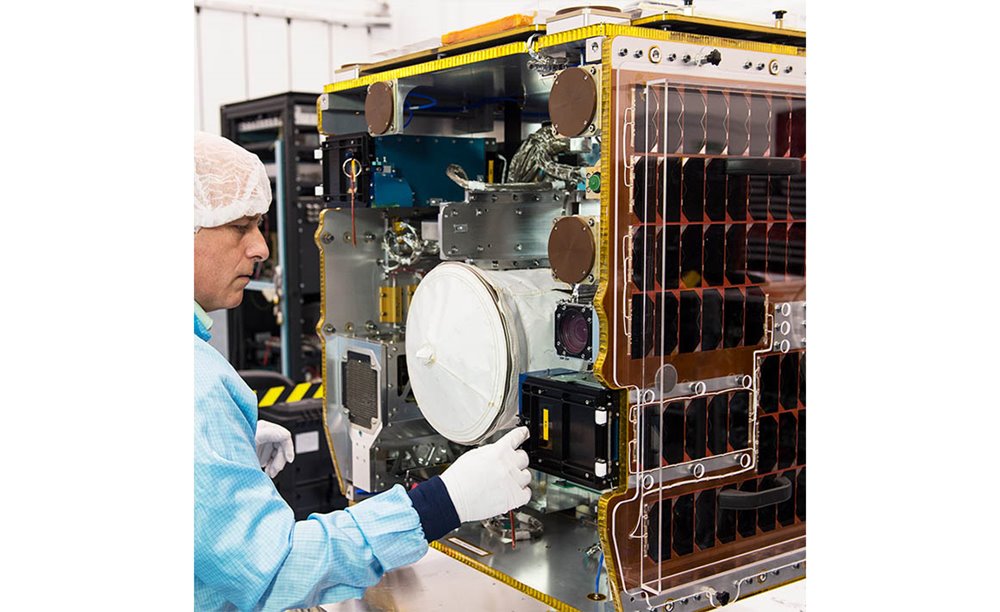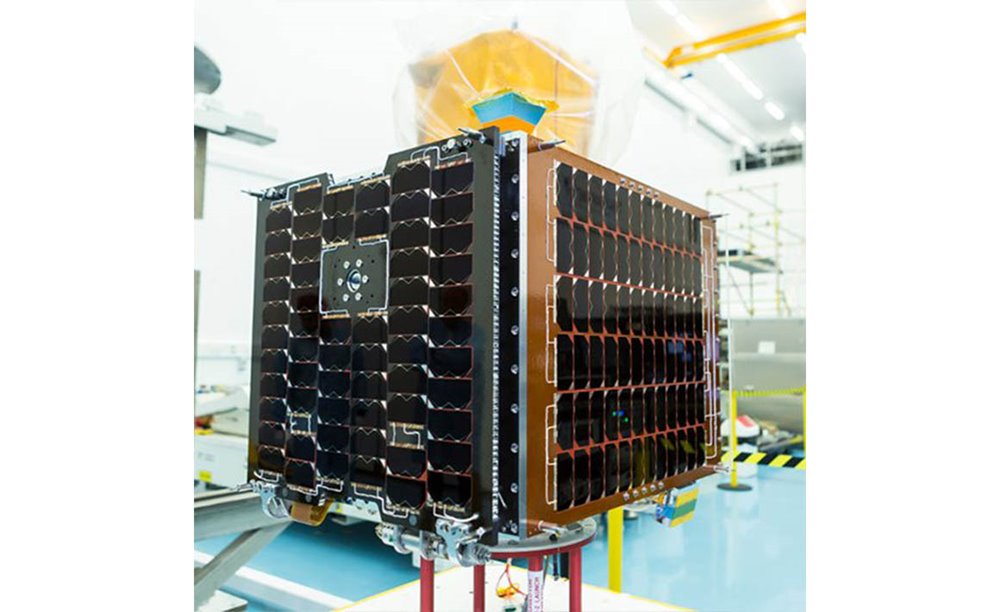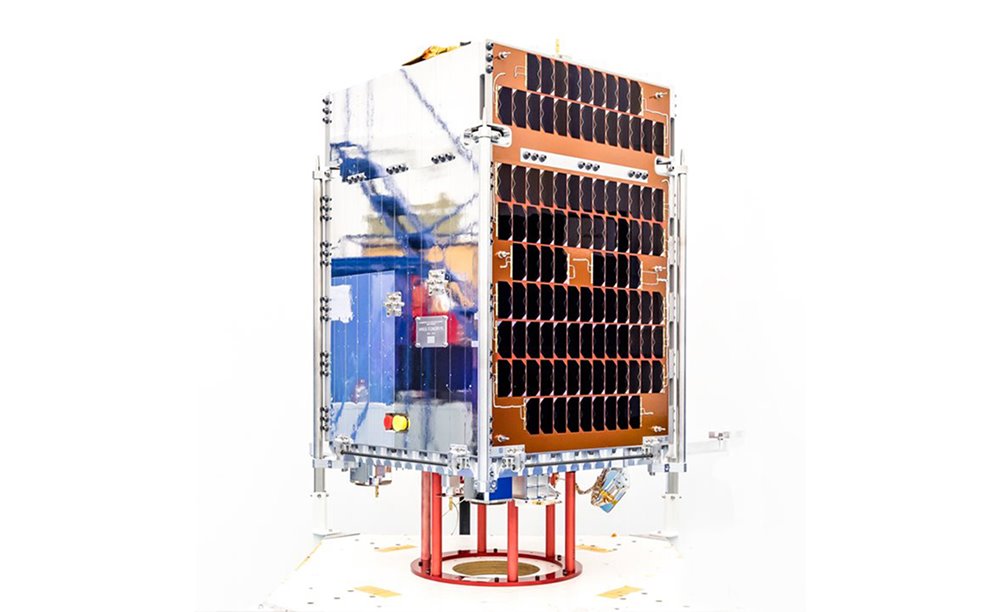SURREY SATELLITE TECHNOLOGY LTD (SSTL)
WE HAVE BEEN BUILDING WORLD-LEADING SMALL SATELLITES FOR 40+ YEARS
OUR VISION STATEMENT
"SSTL pioneers audacious new satellite technologies, products and services and shares its know-how to enable advancement in Space."
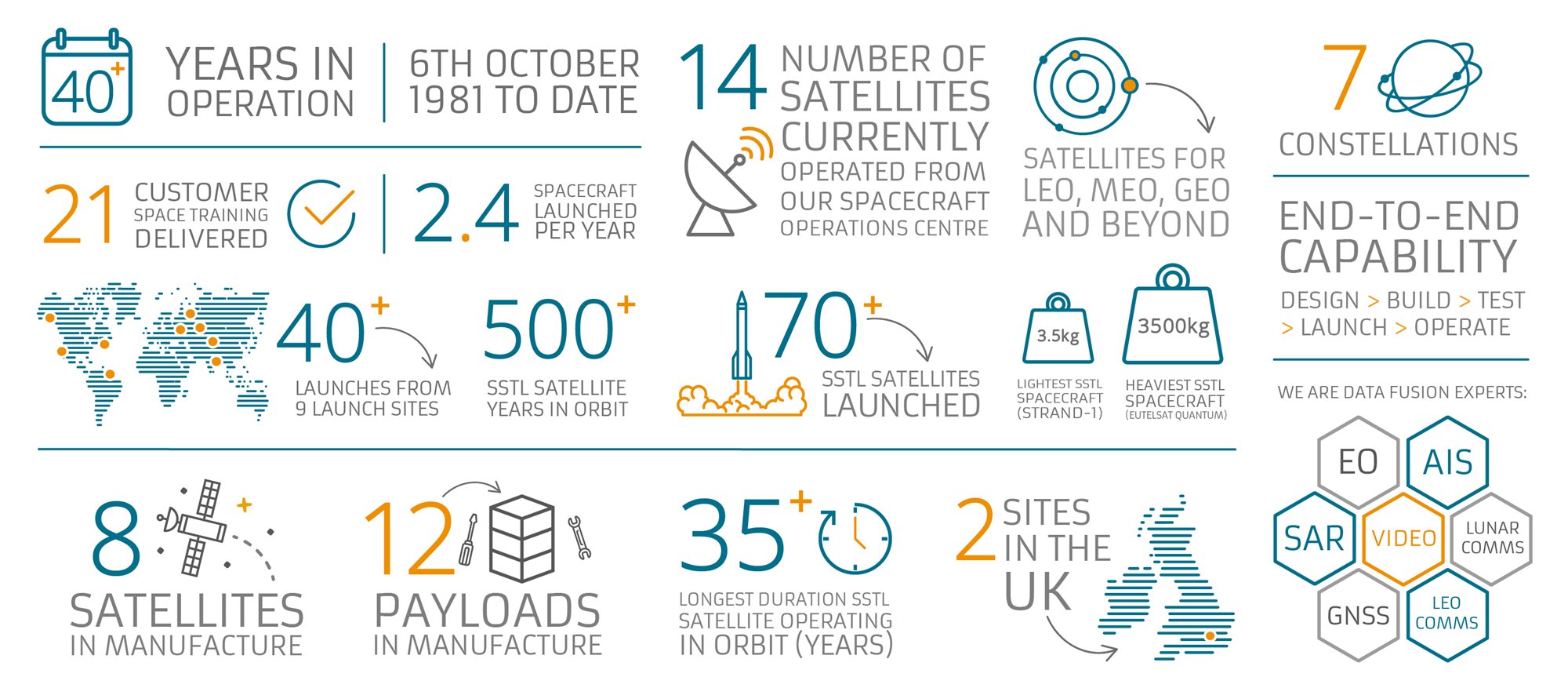
The SSTL story is a showcase of British ingenuity, ambition and engineering expertise
In the mid-1970s space was considered to be the preserve of a few super-powers and restricted to the most affluent of nations since it was extremely complex and expensive to access. The satellites launched at that time used components specially manufactured and tested to perform reliably in the harsh space environment but with only limited functions that could not be reprogrammed once in orbit.
In the late 1970s, a group of researchers working at the University of Surrey, led by a young Martin Sweeting, decided to experiment by creating a satellite using commercial off-the-shelf (COTS) components. The idea was bold and audacious and the results were surprising.
That first satellite, UoSat-1, was built in a small university lab in a cleanroom fabricated from B&Q - and with printed circuit boards designed by hand on a kitchen table. Launched in 1981 with the help of NASA UoSAT-1 was the first modern re-programmable small satellite and was a great success, outliving its planned three year life by more than five years. Most importantly, the team showed that relatively small and inexpensive "micro" satellites could be built rapidly to perform successful and sophisticated missions.
In 1985 Surrey Satellite Technology Ltd was formed as a spin-out company to transfer the results of research into a commercial enterprise. The Company grew steadily and has worked with a wide range of international customers and partners, building and launching ~70 sateliltes for 22 countries over the following three decades.
In 2009 Airbus bought the majority shareholding from the University of Surrey, allowing SSTL to fulfil its growth potential. SSTL is a wholly owned subsidiary of Airbus.
SSTL pioneered the design, build, test and operation of small satellites and has been a world leader in the field for over 40 years.

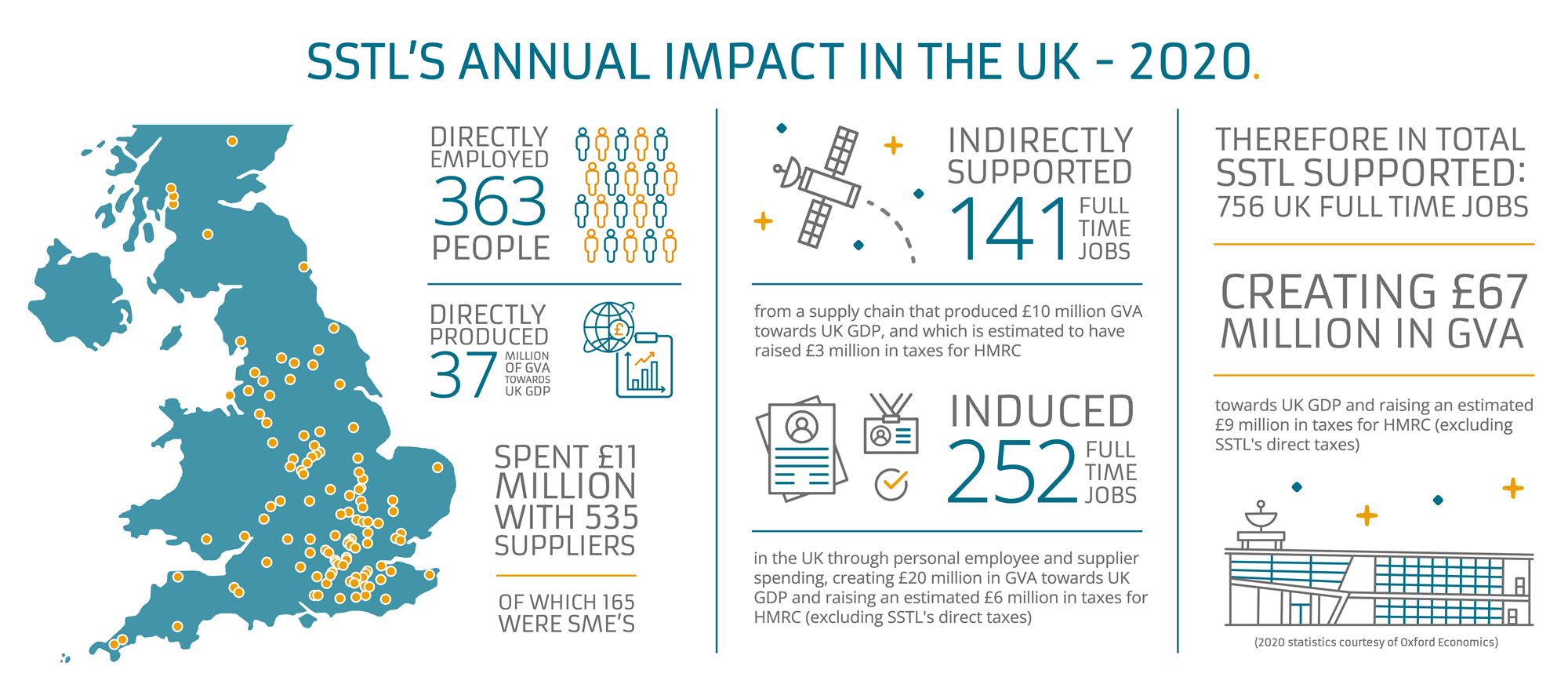
CELEBRATING OUR SUCCESS
1998:
Queen's Award for Technological Achievement2000:
SSPI Industry Innovators Award2004:
World Technology Network Corporate Award for Space2005:
The Queen’s Award for Enterprise in Innovation2006:
The Royal Institute of Navigation Harold Spencer Jones Gold Meal
&
The Times Higher Award for Outstanding Contributions to Innovation and Technology2007:
Royal Aeronautical Society Silver Medal for TopSat2008:
ESA Award for Outstanding Contribution to the Galileo programme2009:
Sunday Times Best Companies to Work For
- 2012:
AIAA Space Systems award for the Disaster Monitoring Constellation
&
Sir Arthur Clarke Project Team Award – NigeriaSat-2 - 2013:
IET Award for Innovation - NovaSAR-1 - 2014:
Made in the UK Aerospace and Defence Award - 2016:
Sir Arthur Clarke Project Team Award - Galileo navigation payloads - 2017:
Royal Aeronautical Society Silver Medallist - Martin Unwin, GNSS Principal Engineer - 2018:
British Engineering Excellence Awards - Brent Brakeboer, Young Design Engineer of the Year
&
International Board of Trade Award for outstanding contribution to international trade & investment - 2019:
Sir Arthur Clarke Project Team Award - the RemoveDEBRIS consortium
&
Aviation Week Network Laureate Award for Space Technology and Innovation - RemoveDEBRIS
&
Royal Aeronautical Society Team Bronze Award - NovaSAR-1
- 2022:
Sir Arthur Clarke Project Team Award - HotSat-1 Project Team - 2023:
Royal Aeronautical Society - Bronze Medal for Optical Imaging Team - 2024: Sir Arthur Clarke Award for Space Achievement - Industry Individual - Awarded to Andrew Cawthorne
SIR MARTIN SWEETING
- 1995:
OBE in Queen’s Birthday Honours List - 1995:
Royal Academy of Engineering Silver Medal - 1996:
Fellowship of the Royal Academy of Engineering - 2000:
Election to the International Academy of Astronautics - 2000:
Fellowship of the Royal Society - 2001:
Knighthood in the Queen’s New Year Honours for services to microsatellite engineering - 2001:
World technology award for space
- 2002:
Frank J Molina Astronautics Medal - 2004:
AAS Industrial Leadership Award - 2006:
Top Ten Britons Who Shaped Our World, the Independent - 2008:
Sir Arthur Clarke Lifetime Achievement Award - 2010:
The Institute of Engineering and Technology Faraday Medal - 2010:
The European Electronics Industry Elektra Lifetime Achievement Award - 2012:
International Von Karmen Wings Award from Caltech/JPL
- 2012:
Guildford Roll of Honour - 2014:
Chinese Academy of Sciences/COSPAR Jeoujang Jaw Award - 2015:
Fellowship of the Royal Aeronautical Society - 2017:
Debrett's list of 500 most influential Britons - 2017:
IAF Distinguished Service Award - 2018:
Honorary Fellowship of the British Interplanetary Society - 2022:
Geospatial World Forum Hall of Fame Award - 2023:
Small Satellite Conference's Lifetime Achievement Award
SSTL IS A MEMBER OF, OR IS REPRESENTED ON, A NUMBER OF ASSOCIATIONS INCLUDING
ARMED FORCES COVENANT
SSTL commits to uphold the Armed Forces Covenant and support the Armed Forces Community. We recognise the contribution that Service personnel, both regular and reservist, veterans and military families make to our organisation, our community and to the country.
